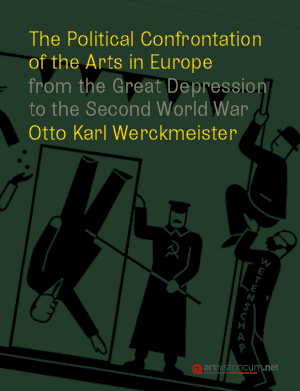
How to Cite
Identifiers
Published
The Political Confrontation of the Arts in Europe from the Great Depression to the Second World War
Georg Bloch Annual, Vol. 24/25, 2019/2020
Between 1929 and 1939 the arts in Europe were politicized more than ever before. Government oversight, party agitation, and public pressure sought to make them serve domestic policies of social stabilization and foreign policies of antagonistic self-assertion. They were drawn into the struggles between the economic, social, and political systems which came to a head in the Second World War. As a result, they were entangled in a three-way ideological conflict between communism, fascism, and democracy. In a fast-moving course, art policies were enacted, and art ideologies were proclaimed, with doctrinaire assurance. This is what the author calls a political confrontation of the arts.
Media coverage
Olaf Peters, Politische Systemkonfrontation und offene Geschichte







